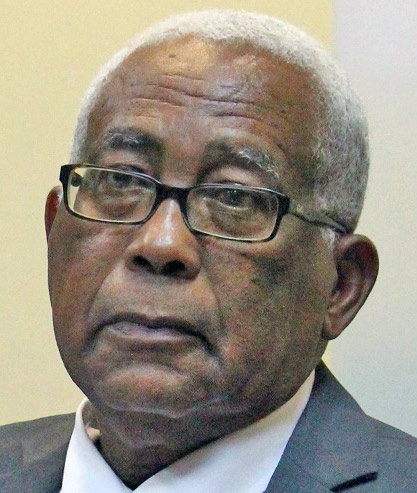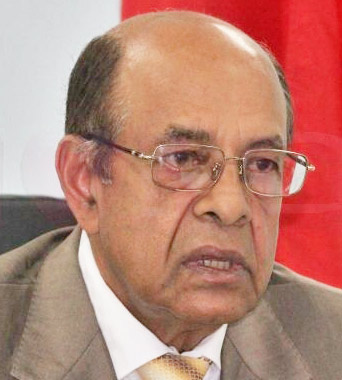
St John’s, Antigua, CMC – The region’s stars are now likely to return to international cricket after Cricket West Indies (CWI) on Monday announced a temporary player amnesty, the first step towards scrapping the contentious eligibility rule.
CWI’s chief executive, Johnny Grave, said that a working group of the Cricket Committee were expected to present recommendations on the rule to the Board of Directors shortly, which would be discussed at a meeting in September. In the interim, Grave said, all “registered players” would be eligible for selection.
“The agreement forms part of a wider strategy to be more inclusive and to improve player relations aimed at re-engaging all players within our system so that they can perform at their best for the Windies Team,” Grave said.

They are currently ninth in the ICC one-day rankings with only hosts England and the remaining top seven nations in the world by September 30, assured of automatic qualification. Ten teams will then contest a qualifying tournament next year for the two remaining spots at the World Cup.
West Indies have one more chance to achieve direct qualification when they face England in a five-match series in September but Graves said CWI were already preparing for the prospect of playing in next year’s qualification tournament in order to reach the World Cup.
“We recognize that it is highly unlikely that we will now automatically qualify for the 2019 World Cup, so whilst the qualifying tournament has yet to be confirmed by ICC, we may only have eight (8) ODIs against England and New Zealand in the next six months to prepare,” the Englishman explained.
“It is crucial that we can have our best performing Windies players available for selection in these important games.”
Without their marquee players, West Indies have struggled in the shorter format, winning just four of their last 21 matches – including an embarrassing loss to then ICC associate side Afghanistan in St Lucia last month.
Superstar opener Chris Gayle has not played since the 2015 World Cup while all-rounder Dwayne Bravo has not suited up since the controversial abandoned tour of India three years ago.
Former Test, one-day and Twenty20 captain Darren Sammy and energetic all-rounder Andre Russell have also sat on the sidelines for the last two years – even though the latter has been serving a one-year suspension for an anti-doping “whereabouts” violation since last January.
Batsman Marlon Samuels was also barred from selection this year because he did not play the full Regional Super50.
The eligibility rule stipulates that players must make themselves available for the domestic tournament in which they wish to represent West Indies. However, those domestic tournaments usually clash with lucrative global T20 leagues.
Recently, incoming director of cricket, Jimmy Adams, described the rule as unsustainable and said it “might not be helping our cricket in the short and long term.”
Also on Monday, CWI said it would soon launch a registration process for all players – men’s and women’s in all age groups – in an effort to “identify the full slate and categories of players we have in the West Indies.”
“This will show commitment on the part of the players to be available for the format/s of the game they wish to play; a commitment to participate in the regional set-up and to honour the system to be in place by then,” president Dave Cameron said.

That the school was not built on a rock was revealed last week by Education Minister Anthony Garcia when a parent wondered how soon her child and other students of the school would be moved out of the community centre, and into a new, more comfortable school environment.
Said Garcia: “Earlier this year the MP for the area and myself visited a number of schools in this area including the Fanny Village Government School. What we have found is that the new school that was being constructed was being constructed in a swamp, and the school is sinking.”
He added: “We are taking measures to ensure that those who were responsible for the design would be held accountable, because we cannot understand how a school could be built in a swamp. In addition to that, we have identified a number of schools that we are going to continue the construction and as soon as we have the requisite funds, the Fanny Village Government School would be among those that we would be constructing.”
Construction of the Fanny Village school began in 2015 after the old structure was burnt down in April that year. Since then, Standards One through Three students were accommodated in the community centre, with students in Standards Four and Five housed in a prefabricated building. Approximately 250 students attend this school.

He noted too the original intention by designers was for a two-storey building; however, this plan was scrapped and those involved were fired. Another designer was hired, and it was decided the site should be capable of supporting a single-storey structure.
He also indicated the government is searching for a new and more stable location for the construction of the school.
According to the Minister in the Ministry of Education, Dr Lovell Francis, villagers had previously warned contractors against constructing the school on that site.
Said Francis: “The villagers told me they told the contractor to be very careful about building the school on that site because it used to be a dam so the water table there is very high.”
He added prior to this government’s tenure, there were also plans to retrofit the sinking school, which would have escalated the cost from (TT) $28 million to about $68 million.
“The end of the tale is a sad one because we have children who are in a community centre, so the community does not have use of the centre. We have $28 million-odd on the ground that cannot be used and then now in the midst of these difficult times we have to find money to build a new school,” Francis said.
Regarding responsibility for the situation, Francis said the “[Education Facilities Company Limited] has been asked to conduct an investigation and they have assured that one is underway. I am adamant that somebody owes us money and I am adamant that somebody is going to pay us”.
However, the contractors responsible for putting the school on the ground denied the school was being constructed on private lands, and not a swamp. Also, it was resting on a piled foundation. This was the claim by Ashana Civil Mechanical Contractors managing director Phillip Whiteman, the company initially hired to build the school.
According to former Education Minister Dr Tim Gopee-singh, construction of the new school was initiated in 2009 under the Patrick Manning-led PNM government. A contract valued at (TT) $23.6 million was awarded to Ashana Construction Limited.
Gopeesingh said this contract was subsequently terminated, and tenders for a new school design were put out in 2014. This time it was awarded to Construction Services and Supplies Limited in February 2015 for (TT) $25 million.
He noted when he assumed office, no activity had taken place at the site for several years after the original contractor “ran into some difficulties” with the foundation.
However, Whiteman countered the school had not been built in a swamp, and the company had been awarded compensation by the court for delays in the school’s construction.
“The project got stalled and eventually got stopped, and a new consultant and contractor were brought on,” Whiteman said.
“I spoke to Gopeesingh many times explaining to him the problems and he just stopped. He just didn’t do anything. There is a swamp adjacent to the site. The school is not built on the swamp, its private land. It was very soft. It’s a piled foundation though, the piles are not sinking. Five years ago it wasn’t moving, I don’t know if it is moving now. I doubt,” Whiteman said.
He added Ashana had not been paid any money for work done on the school and the matter was now in court.

By Dwarka Lakhan
Two of Guyana’s largest trading partners, the United States of America and the European Community, have blacklisted the country for having inadequate measures in place to prevent money laundering. In this three-part series, we examine the history leading up to Guyana being blacklisted; the underlying reasons for the country’s dubious classification; and the impact of being blacklisted, on businesses.
(First of three parts on Money Laundering)
Paradoxically, both APNU and the AFC, while in opposition, obstructed the passage of the country’s Anti-Money Laundering and Countering the Financing of Terrorism Act ((AML/CFT), causing the country to be blacklisted by the Caribbean Financial Action Task Force (CFATF), an arm of the European-based international body, the Financial Action Task Force (FATF) in May 2014.
Now that the APNU/AFC coalition is in power, it has strengthened the country’s money laundering laws, enabling it to be removed from the CFATF blacklist.
However, the country remains on the blacklist of both the United States and the European Commission (EC) – meaning that its two largest trading partners continue to view it as a risk to the global financial system. In a press conference in June, the country’s Foreign Minister Carl Greenidge is reported saying that it is absurd that Guyana could find its way on the black lists after tightening its anti-money laundering laws.
“Our impact and influence internationally can only be small and whilst it is true that the previous government (referring to the PPP) was accused of harboring, facilitating and doing a whole set of things that helped money laundering and the like, we have not been fingered in any way in relation to terrorism to any significant or meaningful extent,” Greenidge told the news conference.
The government contends that there’s no evidence to support the country’s dubious label as a Laundromat for illegal money.
Evidently, there’s more than meets the eye when it comes to money laundering in Guyana. In spite of its rules and regulations, money is evidently being laundered in numerous ways. That’s the reason why so many individuals with relatively small reportable incomes can acquire expensive property or live grand lifestyles that are not commensurate with their incomes or inherited wealth. (Discussed in more details in Part 2)
Arguably, Guyana has had a turbulent past when it comes to money laundering. Both the former PPP and the current APNU+AFC governments must share responsibility for the country’s current classification.
Incidentally, in October 2016, the CFATF removed Guyana from its blacklist for making significant progress in improving its AML/CFT regime but not before a period of political machinations leading up to the improvements.
Upon removing Guyana from its blacklist, the CFATF noted that Guyana had established the legal and regulatory framework to meet commitments outlined in its action plan with respect to addressing strategic deficiencies in its legislation that were identified two years earlier.
Among the deficiencies addressed were a definition of beneficial ownership and broadening the definition of property subject to confiscation.
But that did not mean that Guyana had met all the requirements of the CFATF. Rather, Guyana has pledged to work with CFATF to address the full range of AML/CFT deficiencies identified in its mutual evaluation report.
So Guyana apparently remains vulnerable to money laundering in the wake of these continuing deficiencies – leading to its classification as a haven for money laundering by the US and the EU.
What’s ironic is that the current coalition partners, APNU and AFC, while in opposition, derailed the previous administration’s plan to address deficiencies in the country’s AML/CFT legislation, causing the country to be blacklisted in May 2014.
The decision to blacklist the country came more than two and a half years after the country was first requested to address deficiencies in its legislation in November 2011, mainly due to the former PPP administration dragging its feet on dealing with issues identified by the CFATF.
Following a delay of more than one and a half year after CFATF’s request, amendments to the country’s AML/CFT Act, first passed in 2009, were tabled on April 22, 2013. This was just over a month prior to first deadline, May 27th, 2013, set by the CFATF for the amendments to be made.
However, the then two opposition parties, APNU and the AFC, chose not to support the legislation mainly on the premise that the government was attempting to rush the bill through parliament after sitting on it for a significant period of time and for supposedly withholding documentation relevant to the Act – a claim which the then government denied.
Following the failure to pass the bill, the country was granted an extension by the CFATF to August 26th, 2013 but a special select parliamentary committee comprising of nine members - four representing the government, four APNU and one, the AFC – chose to delay consideration of the bill until after the required deadline.
In spite of the prospects of the country being blacklisted and support for the then government’s position by local, regional and extra-regional bodies, the combined opposition continued to delay passage of the bill for a variety of spurious reasons. It must be noted that the combined opposition then had a one seat majority in parliament and thus the power to delay the passage of legislation.
The opposition parties then proposed several amendments prior to passing the bill, among them changes to the entire governing apparatus of the Financial Intelligence Unit (FIU) which oversees the AML/CFT process; the removal of the words Attorney-General wherever it appears in the bill and replacing it with the acronym, FIU; and vesting police and customs officers with the power to seize money from any person, anywhere in Guyana, if those officers have reason to believe that the money constitutes the proceeds of crime, or is intended to be used to fund criminal activities.
And in efforts to blackmail the government, APNU also demanded that the former President assent to several bills that he had deemed unconstitutional.
It is prudent to note that none of the opposition’s delaying tactics had any direct bearing on the credibility of the AML/CFT Bill, a fact that was pointed out by the CFATF. Rather, the opposition’s actions were deliberately aimed at embarrassing the government and putting the country at risk in a show of power.
However, simmering beneath the surface of opposition demands were questions surrounding past transactions that appear to involve money-laundering; and the award of several contracts through allegedly corrupt practices. These questions remain today.
With the minority government failing to get opposition support for the AML/CFT Bill following several extensions, the CFATF could no longer delay the much anticipated blacklisting decision.
The kicker though is that it was not until the CFATF made the decision to blacklist Guyana that the opposition parties announced that the AML/CFT legislation could be approved in short order. But by then it was too late.
In announcing its action, the CFATF noted that Guyana has significant AML/CFT deficiencies and has failed to make significant progress in addressing those deficiencies. It called upon member countries to implement further counter measures to protect their financial systems from the ongoing money laundering and terrorist financing risks emanating from Guyana.
With this decision, the opposition did not have the opportunity to ride in like a knight in shining armor to save the country from being blacklisted. And the then PPP government paid the price for being complacent.
Therefore, Guyana today finds itself just a little further ahead than where it was under the former PPP administration, in spite of the current government’s efforts to revise its AML/CFT legislation. The reasons for Guyana being blacklisted by the USA and the EC will be addressed in Part 2.


